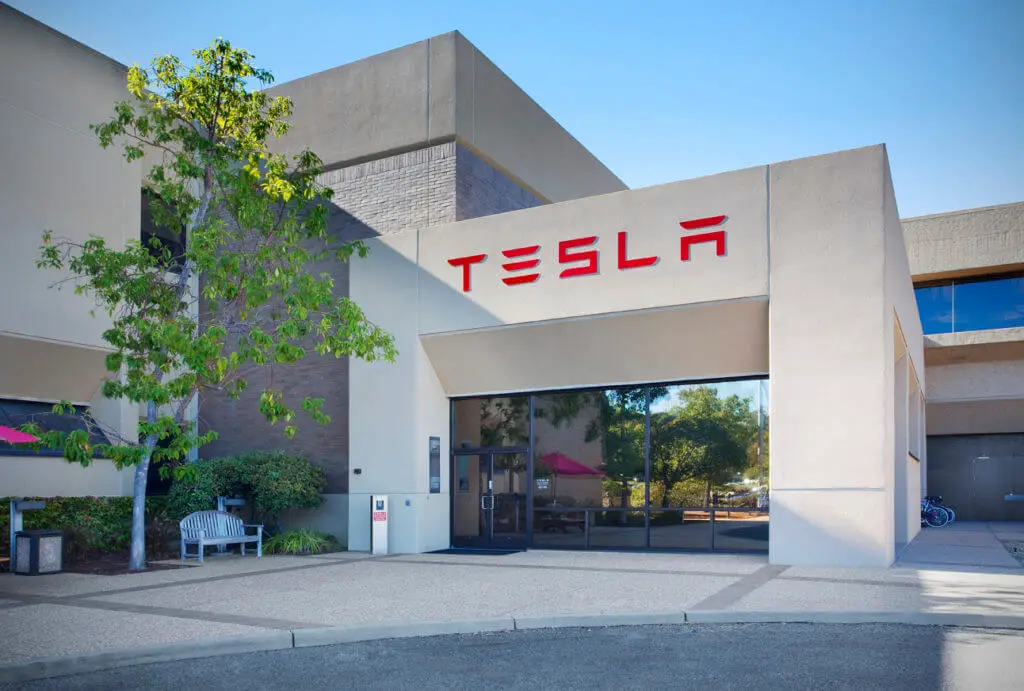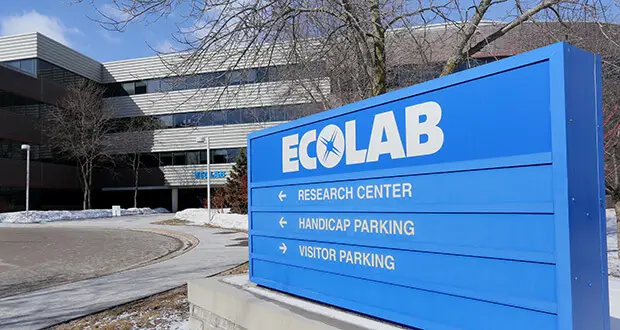Tesla Mission and Vision Statement Analysis

Tesla’s mission statement is “to accelerate the world’s transition to sustainable energy.” The mission statement by Tesla shows the shift towards business approaches that are more futuristic. The focus on sustainability indicates the compliance of the company with global demands of business methods that align with calls for green energy. Tesla adopted this mission statement after abandoning the earlier one whose focus was on transitioning the world to sustainable transport. In this case, the company demonstrates its focus on energy as the critical aspect of its business. The mission statement has the following components:
- Accelerating global transition. The entire business model by Tesla is based on its determination to lead the world from the traditional energy uses to the more sustainable and clean energy sources especially in the motor vehicle industry. Tesla indicates that it is time the world appreciated the importance of preserving the stability of the planet, and this starts with the energy sources used across all sectors. To achieve this ambition, Tesla concentrates all its resources on coming up with the most applicable technologies to make this a reality in the car manufacturing sector. Its wide range of car models today reflects this focus and the progress the company has achieved so far in accelerating this transition.
- Improving communities. The second component in the mission statement of Tesla has a close relationship with the first one. By inclining on clean and sustainable energy, Tesla directly contributes to the overall wellness of communities including the promotion of their health with less environmental pollution unlike in the case of traditional vehicles that run on fossil fuel. What’s more, Tesla gifts people with more efficient vehicles that are significantly economical meaning that people save more money that can be channeled to other developmental processes in society. The fact that the company does more by manufacturing solar panels as a source of green energy in homes and factories makes this company the future of humanity where clean energy is concerned.
- Exceeding expectations. Tesla respects the preferences of its customers in the manufacture of its vehicles and other products. Its custom order, however, goes beyond common practice, as it allows customers to influence the appearance and other design elements of the vehicle or the product they order. Such a service rarely exists in many other players out there in the manufacturing sector, and this is what makes Tesla special across the globe. In addition, the company actively involves itself in the advancement of technologies where sustainability is the primary factor of consideration across different industries.
Introduction
Tesla Inc. is a company that has taken innovations in the motor vehicle industry to the next level. Its mission and vision statements emphasize the focus of the company is ushering in the new era of electric cars, which it considers more reliable, efficient and sustainable. Tesla’s mission and vision statements have been changing to align with this strategy of the company of shifting into the manufacturing of automobiles that run of electricity rather than the conventional ones.
The business approach advocated in its mission and vision statement has accelerated the growth rate of this company ever since its foundation in 2003, rising to one of the major car manufacturing firms in the world. Tesla competitors and new start-ups find inspiration in company’s achievements. In fact, it got recognized as the leading seller of plug-in type of cars for passengers in 2018, showing how progressive its mission and vision statement has been for the company.
A corporate vision statement simply provides the future roadmap for the firm, while the mission stamen outlines the planned activities to enable the company to achieve its vision. Tesla’s vision statement indicates that it wants to lead other automobile manufacturers into the electric model future, while its mission statement reveals what the management would do to advance the effectiveness of the business and its branding.
Tesla’s continued dominance in its car production approach is also supported by its core values. The company runs on key principles that guide its internal practices, and this has contributed to its overall strength. Essentially, the presence of these core values significantly contributes to the achievement of Tesla’s mission and vision statements.
| COMPANY | Tesla |
| FORMERLY | Tesla Motors, Inc. (2003–2017) |
| INDUSTRY | Automotive Energy storage Energy production |
| FOUNDED | July 1, 2003 |
| FOUNDERS | Martin
Eberhard Marc Tarpenning Elon Musk J. B. Straubel Ian Wright |
| HEADQUARTERS | Palo Alto, California, U.S. |
| TYPE | Public |
| KEY PEOPLE | Robyn
Denholm (Chairwoman) Elon Musk (CEO) Drew Baglino (CTO) Zach Kirkhorn (CFO) |
| PRODUCTS | Electric
vehicles Tesla Energy |
| REVENUE | $24.578 billion (2019) |
| NUMBER OF EMPLOYEES | 48,016 (2019) |
| OWNER | Elon Musk (21.7%) |
Vision Statement
Tesla’s vision statement is “to create the most compelling car company of the 21st century by driving the world’s transition to electric vehicles.” The vision statement acknowledges that the world has come to an era where only renewable energy should be prioritized. In the case of Tesla, the focus is on the use of electric energy to power all motor vehicles. The vision statements comprise these features:
- Most compelling car company. In this component, Tesla reveals its leadership in the car manufacturing sector. The business approach adopted by Tesla is all about leading other manufacturers into understanding the concept of electric-powered vehicles and appreciating the benefits green energy has in the 21st century. As a result, Tesla focusses all its resources and creativity into making this a reality.
- Transition to electric vehicles. Tesla has a global agenda of influencing the whole world to embrace electric cars. In fact, the company expansion trends show how committed it is in achieving this vision of globalizing electric vehicles. For instance, Tesla has opened various production plants in various global regions. With this approach, the company continues to influence other players to recognize the place of renewable and green energy in the modern era as well.
Core Values
Tesla’s core values comprise “doing the best, taking risks, respect, constant learning, and environmental consciousness.” Tesla applies these values as the principles that govern the overall attitudes and practices of all stakeholders and its workforce.
The emphasis on performance is a value that has seen Tesla advance technological-wise, as the company also encourages its employees to take calculated risks while driving innovations. In addition, the success recorded by Tesla so far has a lot to do with the corporation promoted by respect among the different players that come in contact with the company. Such a conducive setting boosts the overall learning of everyone, and this translates to outputs that agree with the environmental protection principles at Tesla.
Tesla Mission Statement History
Tesla’s mission statement has remained consistent throughout its history, reflecting the company’s commitment to driving the global transition to sustainable energy. While there have been variations in the wording over time, the core objective of accelerating the adoption of sustainable energy solutions has been at the forefront. Let’s explore the mission statement history of Tesla, grouped by year from newest to oldest:
- 2021 – Present
“To accelerate the world’s transition to sustainable energy.“
In recent years, Tesla has maintained its mission statement focused on promoting the transition to sustainable energy. This succinct and powerful statement encapsulates the company’s dedication to driving change in the automotive industry and beyond.
- 2006 – 2021
“To create the most compelling car company of the 21st century by driving the world’s transition to electric vehicles.“
During this period, Tesla’s mission statement emphasized the goal of becoming a leading automotive company, specifically in the electric vehicle (EV) sector. The focus was on producing attractive and high-performance electric cars that would appeal to a broader market and drive the shift away from fossil fuel-based transportation.
- 2003 – 2006
“To make electric vehicles mainstream, and thereby reduce greenhouse gas emissions.“
In its early years, Tesla’s mission statement revolved around making electric vehicles more mainstream and reducing greenhouse gas emissions. The emphasis was on combating climate change by advocating for and producing electric vehicles that could be viable alternatives to traditional gasoline-powered cars.
It’s important to note that while the wording has changed over time, the underlying objective of accelerating the world’s transition to sustainable energy has remained a constant theme in Tesla’s mission. The company’s vision has always been centered on pushing the boundaries of clean technology and promoting the widespread adoption of sustainable energy solutions.
Slogan
Tesla’s slogan is: To accelerate the advent of sustainable transport and electric technology.
Headquarters
Tesla’s main headquarters is in Palo Alto, California, United States
References
- Bartkus, B., Glassman, M., & McAFEE, B. R. U. C. E. (2006). Mission statement quality and financial performance. European Management Journal, 24(1), 86-94.
- Chen, Y., & Perez, Y. (2018). Business model design: lessons learned from Tesla Motors. In Towards a Sustainable Economy (pp. 53-69). Springer, Cham.
- Collins, J. C., & Porras, J. I. (1991). Organizational vision and visionary organizations. California management review, 34(1), 30-52.
- David, F. R., & David, F. R. (2003). It’s time to redraft your mission statement. Journal of Business Strategy, 24(1), 11-14.
- Dietz, B., Ahlert, K. H., Schuller, A., & Weinhardt, C. (2011, June). Economic benchmark of charging strategies for battery electric vehicles. In 2011 IEEE Trondheim PowerTech (pp. 1-8). IEEE.
- Domínguez, J. M., Crespo, A. J., & Gómez-Gesteira, M. (2013). Optimization strategies for CPU and GPU implementations of a smoothed particle hydrodynamics method. Computer Physics Communications, 184(3), 617-627.
- Eberhard, M., & Tarpenning, M. (2006). The 21 st century electric car tesla motors. Tesla Motors.
- Fleming, B. (2013). Electric vehicle collaboration-Toyota motor corporation and tesla motors [automotive electronics]. IEEE Vehicular Technology Magazine, 8(1), 4-9.
- Hardman, S., Shiu, E., & Steinberger-Wilckens, R. (2015). Changing the fate of Fuel Cell Vehicles: Can lessons be learnt from Tesla Motors? International journal of hydrogen energy, 40(4), 1625-1638.
- Karamitsios, A. (2013). Open innovation in EVs: A case study of Tesla Motors.
- Mangram, M. E. (2012). The globalization of Tesla Motors: a strategic marketing plan analysis. Journal of Strategic Marketing, 20(4), 289-312.
- Mazzucato, M. (2015). Building the entrepreneurial state: A new framework for envisioning and evaluating a mission-oriented public sector. Levy Economics Institute of Bard College Working Paper, (824).
- Motors, T. (2015). Tesla Model S. Palo Alto.
- Musk, E. (2013). The mission of Tesla. Tesla Blog.
- Romanin, V., Carey, V. P., & Norwood, Z. (2010, January). Strategies for performance enhancement of tesla turbines for combined heat and power applications. In ASME 2010 4th International Conference on Energy Sustainability (pp. 57-64). American Society of Mechanical Engineers.
- Stringham, E. P., Miller, J. K., & Clark, J. R. (2015). Overcoming barriers to entry in an established industry: Tesla Motors. California Management Review, 57(4), 85-103.
- Tesla – Home.












Absolutely fantastic. Totally focussed year on year with remarkable values and sustainability.